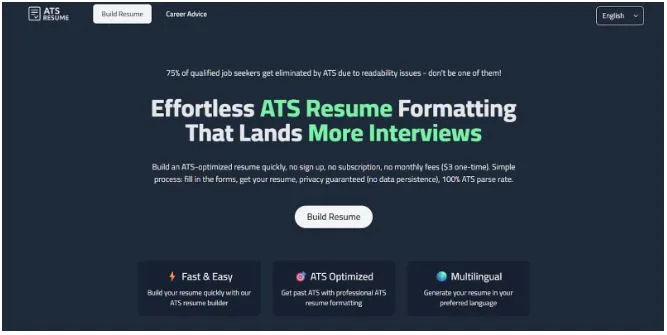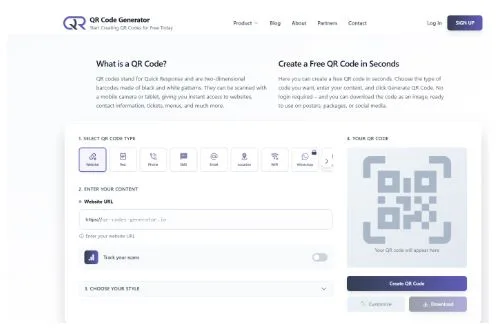The Ultimate Guide to Writing a Resume That Gets Interviews
Finding a job today is more competitive than ever and your resume is often the first impression you give to potential employers. Writing a resume that stands out and passes through Applicant Tracking Systems is the key to landing interviews. Many job seekers struggle because they either overcomplicate the process or fail to highlight what recruiters really want to see. In this guide, you will learn everything you need to create a professional resume that works for you, even if you are starting from scratch.
Why Your Resume Matters More Than You Think
Your resume is not just a document, it is your personal marketing tool. Recruiters spend only a few seconds scanning each application, which means every word on your resume needs to earn its place. When you approach writing a resume with a clear strategy, you increase your chances of getting noticed and moving to the interview stage.
Think of your resume as your professional story. Instead of simply listing job duties, you should highlight achievements, skills and value. Employers want to quickly see how you can contribute to their company. A strong resume bridges the gap between your experience and what they are looking for.
The Core Elements of a Resume That Works
A good resume is clear, focused and easy to read. While styles may vary depending on the industry, the basic structure remains the same. At a minimum, your resume should include:
- Contact information (name, email, phone number and location)
- A short professional summary or objective
- Work experience with job titles, companies and dates
- Education and relevant training
- Skills section tailored to the job
When writing your work experience, use action verbs and show measurable results. For example, instead of writing “responsible for customer service,” write “increased customer satisfaction by 20 percent through improved response time.” Concrete results show that you can deliver value.
Common Mistakes to Avoid When Writing a Resume
Many job seekers unintentionally sabotage their chances with small but costly mistakes. One of the most common is using a generic resume for every job. Recruiters can quickly tell when you are not tailoring your application. Always align your resume with the job description and highlight the most relevant skills and experiences.
Another frequent mistake is poor formatting. Cluttered resumes with long paragraphs and inconsistent fonts make it harder for both recruiters and Applicant Tracking Systems to read. Keep your design clean and avoid unnecessary graphics or tables that can confuse the system. Simplicity and clarity always win.
Making Your Resume ATS Friendly
Applicant Tracking Systems are software programs that employers use to filter resumes before they reach a human recruiter. If your resume is not optimized for ATS, it might never be seen. The good news is that making your resume ATS friendly is simple once you know what to do.
Start by using standard section titles such as “Work Experience” and “Education” so the system can easily recognize them. Include keywords from the job description naturally throughout your resume, especially in your skills and work experience sections. Finally, save your resume as a Word or PDF file to ensure it uploads correctly.
If you want a simple way to build a professional and ATS optimized resume without stress, you can try ats-resume.com. It helps you quickly create a resume that recruiters can read and systems can process.
How to Write a Resume Summary That Grabs Attention
Your summary or objective statement is the first section recruiters read after your contact information. This short paragraph sets the tone for the rest of your resume. Instead of writing a vague objective like “Looking for a job in marketing,” craft a targeted summary that shows your strengths and goals.
For example: “Results driven digital marketer with three years of experience developing campaigns that increased engagement by 40 percent. Skilled in social media strategy, content creation and analytics.” This statement immediately shows value and positions you as a strong candidate.
Tailoring Your Resume for Every Job Application
No two job descriptions are the same, which is why tailoring your resume is essential. Recruiters want to see that you are a strong match for their specific role. Read the job posting carefully and underline keywords that describe skills and qualifications. Then reflect those same keywords in your resume where they fit naturally.
For instance, if a job description emphasizes “project management” and “team leadership,” highlight projects you managed successfully and mention how you led teams to achieve goals. This approach shows that you understand the employer’s needs and have the proven ability to meet them.
Formatting Tips for a Clean and Professional Resume
A visually clear resume makes a stronger impression. Use a simple font such as Arial, Calibri or Times New Roman at 11 or 12 point size. Keep margins consistent and leave enough white space to improve readability. Avoid long paragraphs and instead use bullet points for achievements and responsibilities.
Limit your resume to one page if you have less than ten years of experience. Two pages are acceptable for more experienced professionals, but only if the content adds real value. Recruiters prefer concise, relevant information over lengthy resumes filled with unnecessary details.
The Final Step Before Sending Your Resume
Before you send out your resume, always proofread carefully. Spelling and grammar mistakes can leave a poor impression and suggest a lack of attention to detail. It is also useful to ask a friend or mentor to review your resume since they may notice errors you missed.
Another important step is testing how your resume appears in an ATS. Upload it into a tool that simulates Applicant Tracking Systems to see how well it performs. If you want a fast solution, this site lets you build an ATS-optimized resume quickly and easily.
Conclusion
Writing a resume may feel overwhelming at first, but with the right approach, you can create one that helps you secure more interviews. By focusing on clarity, tailoring your content for each application and ensuring your resume is ATS friendly, you dramatically increase your chances of success. Remember, your resume is more than a list of jobs, it is your personal story of growth, skills and achievements.
If you are ready to take the next step, you can build a professional and ATS optimized resume easily with ats-resume. It is the simplest way to create a resume that gets noticed and helps you move closer to your career goals.






